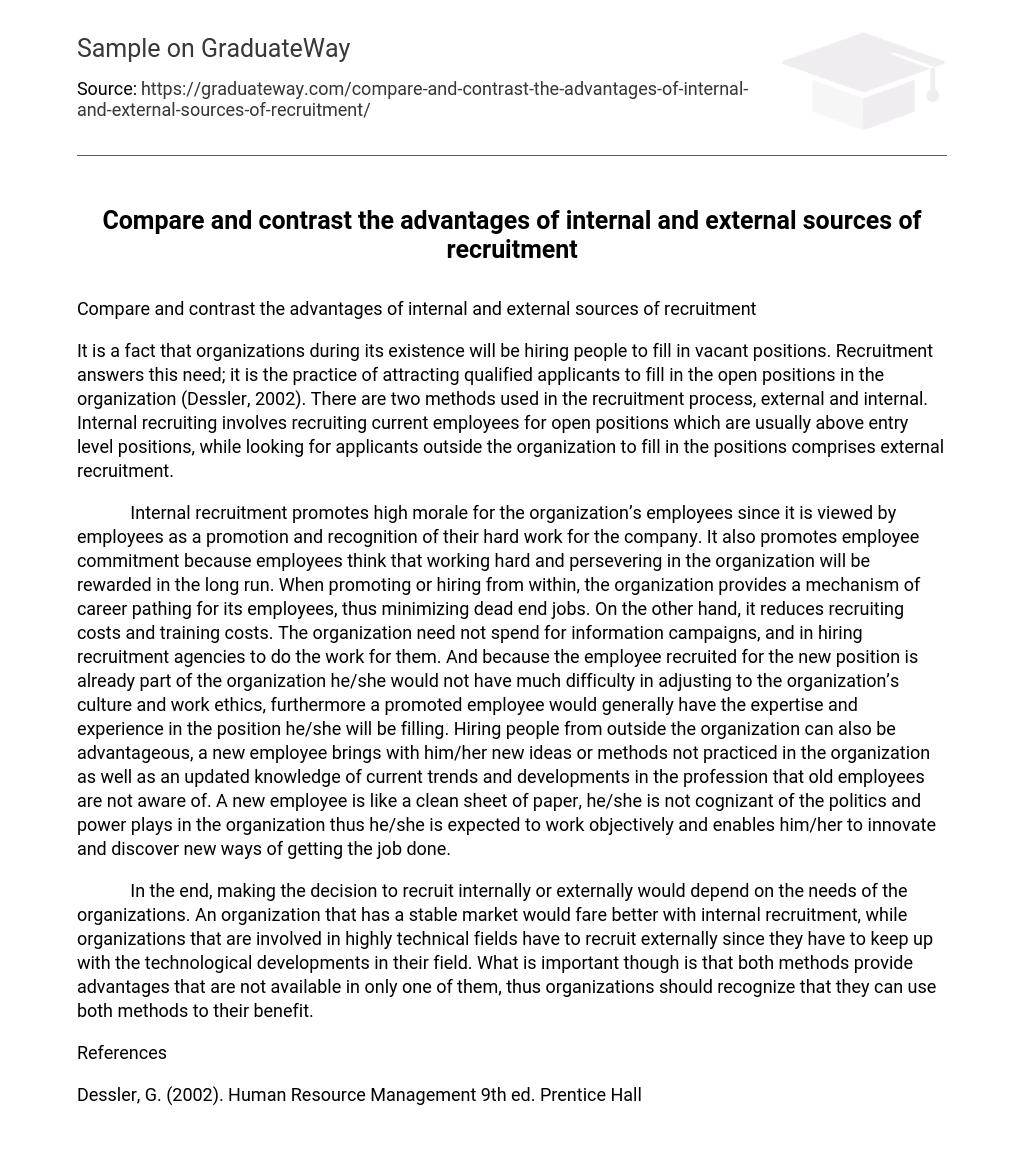It is a fact that organizations will need to hire people to fill vacant positions during their existence. Recruitment answers this need by attracting qualified applicants to fill open positions in the organization (Dessler, 2002). The recruitment process involves two methods: internal and external. Internal recruiting involves hiring current employees for open positions above entry level, while external recruiting involves looking for applicants outside the organization to fill these positions.
Internal recruitment promotes high morale among an organization’s employees since it is viewed as a promotion and recognition of their hard work. It also encourages employee commitment because they believe that working hard and persevering in the organization will be rewarded in the long run. By promoting or hiring from within, the organization provides a mechanism for career pathing, thus minimizing dead-end jobs.
In addition, internal recruitment reduces recruiting and training costs. The organization does not need to spend on information campaigns or hiring recruitment agencies to do the work for them. Since the employee recruited for the new position is already part of the organization, he/she would not have much difficulty adjusting to its culture and work ethics. Furthermore, a promoted employee would generally have expertise and experience in the position he/she will be filling.
However, hiring people from outside can also be advantageous as new employees bring with them new ideas or methods not practiced in-house as well as updated knowledge of current trends and developments in their profession that old employees may not be aware of. A new employee is like a clean sheet of paper; they are not cognizant of politics or power plays within an organization so they can work objectively which enables them to innovate and discover new ways of getting things done.
In the end, the decision to recruit internally or externally depends on the needs of the organization. Organizations with a stable market would fare better with internal recruitment. However, those involved in highly technical fields must recruit externally to keep up with technological developments. It is important to note that both methods provide advantages that are not available in only one of them. Therefore, organizations should recognize that they can use both methods to their benefit.
References.
Dessler, G. (2002). Human Resource Management, 9th edition. Prentice Hall.





